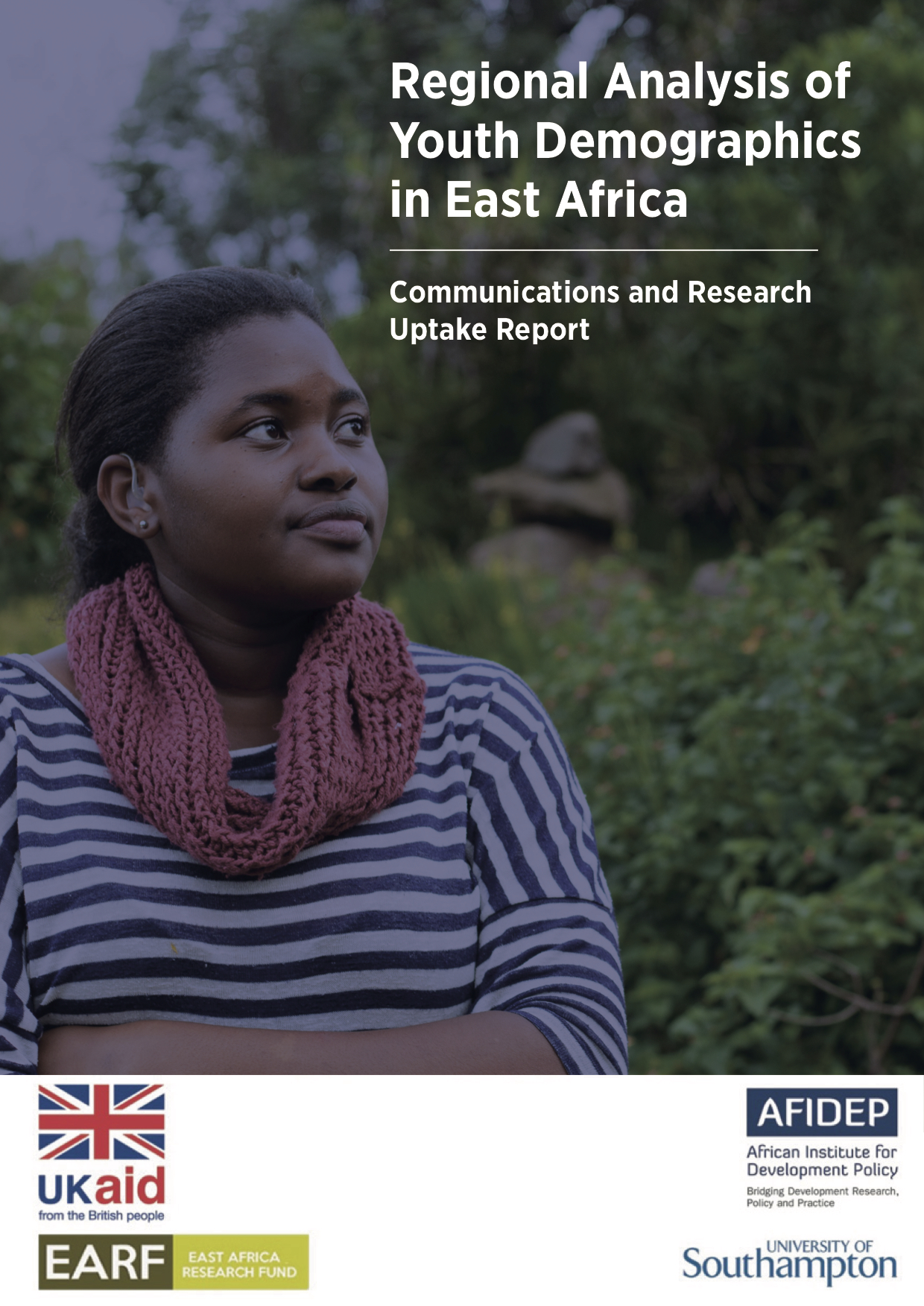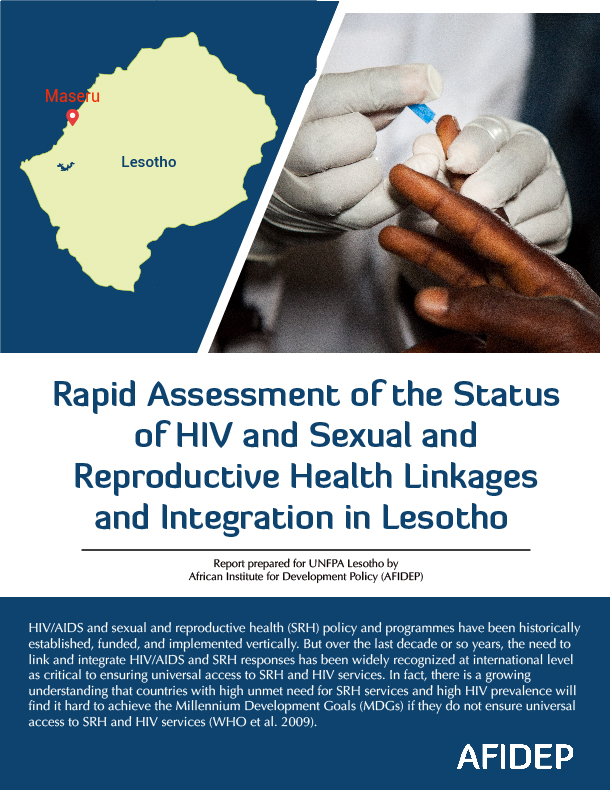Research Reports

The East African Regional Analysis of Youth Demographics study examined youth population dynamics, policies and other economic and natural challenges in Kenya, Rwanda, Tanzania and Uganda and the impact they can have on the socioeconomic transformation of a country. The compilation and production of this research uptake report is a culmination of various research communication and engagement forums attended by a cross-section of stakeholders in the field of development from the East African Community (EAC) and beyond.

The primary objective of this study was to assess Namibia’s prospects for harnessing the demographic dividend and to identify priority options for maximising the dividend. Demographic change has implications for the realisation of these ambitions. This report, therefore, outlines the key policy recommendations on how Namibia can harness the potential of her youthful population to achieve socio-economic development.

The Evidence-Informed Policy-Making (EIPM) field seeks to inculcate a culture of evidence use in decision-making to ensure the right investments are made towards development policies and practice. This report explores the EIPM landscape with the aim of understanding the barriers of evidence use in policy-making and the ways of measuring EIPM impact.

The demographics of the East African Community (EAC), particularly those of Kenya, Rwanda, Tanzania, and Uganda, mirror those of Africa – decades of very high fertility in Africa, coupled with rapidly declining child mortality have created a population age-structure dominated by young people under the age of 25.

Botswana’s socio-economic development aspirations as spelt out in Vision 2036, its current long-term development strategy, is to graduate from being an upper-middle-income country (UMIC) to a high-income country (HIC) with prosperity for all. Demographic change has implications for the realisation of these ambitions.

The Network of African Parliamentary Committees of Health (NEAPACOH), previously known as the Southern and Eastern Africa Parliamentary Alliance of Committees on Health (SEAPACOH)) is one of the active networks engaging members of parliament (MPs) in Africa to strengthen the delivery of their functions of oversight, legislation, and representation, in tackling health challenges in the region.

This report summarises the results of a study carried out to assess the potential Demographic Dividend (DD) that Rwanda can earn under different policy scenarios, and also to determine the policy actions that the country can invest in to optimise its chances of harnessing the DD. The Demographic Dividend (DD) refers to the temporary economic benefit that a country can earn from a significant increase in the ratio of working-age adults relative to young dependents that is created by rapid decline in birth rates.

This study examines three cases in which governments in Sub-Saharan Africa have undertaken reforms of formal secondary as well as TVET systems to better incorporate training in transferable skills. While, until recently, this type of skills training was largely implemented on a small scale by private and non-profit organizations working largely with out-of-school youth, these cases offer early examples of how the governments of Rwanda, Kenya, and Nigeria have brought this training into the formal education system and scaled it up, sometimes dramatically.

In 2011, the government of Malawi adopted a National Health Research Agenda (NHRA) for 2012-2016 to guide investments in health research in order to enable the generation of research that is responsive to the health needs and priorities of the country, with the ultimate aim of improving the health status of its people. The Agenda was expected to contribute to the overall goal of the second Malawi Growth and Development Strategy (MDGS II) and the achievement of the Millennium Development Goals.

HIV/AIDS and sexual and reproductive health (SRH) policy and programmes have been historically established, funded, and implemented vertically. But over the last decade or so years, the need to link and integrate HIV/AIDS and SRH responses has been widely recognized at international level as critical to ensuring universal access to SRH and HIV services. In fact, there is growing understanding that countries with high unmet need for SRH services and high HIV prevalence will find it hard to achieve the Millennium Development Goals (MDGs) if they do not ensure universal access to SRH and HIV services (WHO et al. 2009).

This report draws from a retrospective policy analysis study of the role of evidence in the formulation of health policies in Malawi. The purpose of the study was to provide an understanding of the status of evidence use in past health policy formulation processes in the country. This study was part of the Strengthening Capacity to Use Research Evidence in Health Policy (SECURE Health) programme and its purpose was to provide baseline information on the status of evidence use that would contribute to the assessment of the impact of the SECURE Health programme

The population of Malawi is youthful, with almost half (47 per cent) aged 18 and below. This youthful population is Malawi’s greatest resource. If properly nurtured and supported, the youth will positively contribute to Malawi’s socio-economic development.
The Government of Malawi through the Ministry of Finance, Economic Planning and Development in collaboration with the United Nations Country Team (UNCT) under the leadership of the United Nations Population Fund (UNFPA) commissioned the National Demographic Dividend Study in 2015.

